Apr 27, 2016A Turnkey Solution for Medical Device Manufacturers
Vue-Med enables companies to comply with the FDA's identification mandate and achieve internal and supply-chain benefits.
When the U.S. Food and Drug Administration (FDA) established its Unique Device Identification (UDI) System to improve patient safety, it did not specify whether device manufacturers should use bar codes or RFID technology to identify medical implants, surgical instruments and life-support/life-sustaining machines. The regulation specifies that each medical device must carry a unique identifier to facilitate recalls, improve reports about adverse events and thwart counterfeiting.
The system leverages human- and machine-readable UDI labeling for identifying medical devices, and requires device labelers to submit information about each device to the FDA's Global UDI Database. The data includes lot, serial number and expiration date.
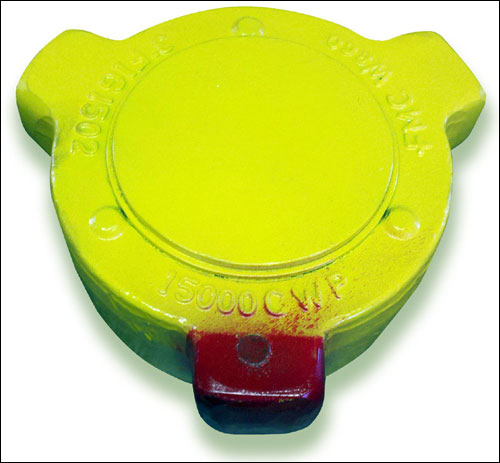
While some device manufacturers are opting to use bar codes to comply with the FDA mandate, other companies see this as an opportunity to adopt RFID because it also allows them to improve their internal processes. And while bar codes may be the easier route to compliance, VueTrack-UDI—which features VueMed's software and Zebra Technologies' hardware—is a complete solution that facilitates UDI compliance and provides supply-chain visibility.
Boston Scientific, Cook Medical, Gore, Medtronic, St. Jude Medical and other large device manufacturers have adopted VueTrack-UDI and are encoding UDI information onto RFID tags at their distribution facilities. They are leveraging the technology for inventory management and chain-of-custody tracking and tracing of products, says Lana Makhanik, VueMed's COO. "Other companies are opting to use bar codes, because to shift to RFID involves a significant retooling of manufacturing and labeling operations," she says. "In terms of executing this, it's going to take time."
Device manufacturers use a Zebra RFID printer (R110Xi4, ZD500R or ZT400) to encode UDI data onto RFID tags and print the required labels. VueTrack-UDI can work with any EPC Gen 2 passive ultrahigh-frequency RFID tag that has the extended user memory required for UDI on-tag data (512 bytes).
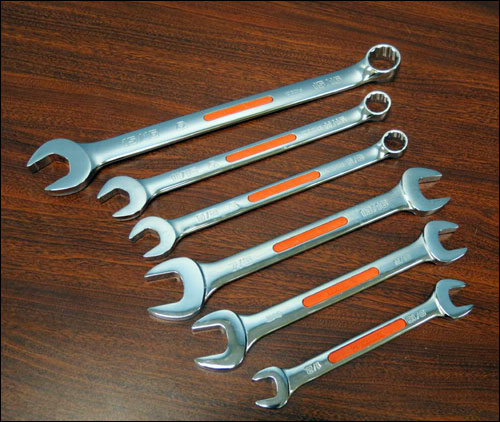
VueTrack-UDI includes software-as-a-service to enable cost savings for companies, because VueMed handles all software maintenance and upgrades. The cost of the software varies based on the size of the implementation, number of locations and so on, Makhanik says. "It takes just a few seconds to encode, print, validate and register the RFID tag for each item, creating its unique identification and providing the ability to track it throughout its life cycle using the VueMed cloud," she says.
Manufacturers can view Web-based reports to track medical devices throughout the supply chain, from their facility to a hospital's procedure room. The UDI tag data allows users to locate expiring and recalled products immediately.
Hospitals that have a fixed or mobile UHF RFID infrastructure can leverage the UDI data for their own inventory management and supplies documentation, including expiration and recall tracking. "Both the manufacturer and the customer, usually a hospital, can know when the device showed up at the customer site," Makhanik says. The data can be integrated with hospital clinical-documentation and electronic health record systems. VueMed is working with a number of hospitals to deploy such infrastructure and services during the next few months, she says.
Hospitals must document the supplies they use for patient care, as well as those they purchase, Makhanik says. "The specifics and degree of supply-documentation requirements may vary from one hospital to another, but as a general rule all must document any devices implanted in patients, along with the lot and serial number and expiration date for each," she says. "Most hospitals are also interested in capturing this information, either before or at the time of receipt into the facility."
Manufacturers and hospitals don't need to use the same software, as long as they're able to refer to the same item or same instance of an item, Makhanik says. VueMed's software and cloud data management enable this visibility and data cross-references between hospitals and manufacturers, as well as between various systems within a hospital, she says. Because VueTrack-UDI encodes the UDI data directly onto the tag, the data can be read by any UHF RFID-compliant technology.
The medical device industry has long suffered from a lack of supply-chain visibility and the ability to do any meaningful supply-chain forecasting, Makhanik says, including knowing what items are in the field, when they're due to expire, where recalled items are, and which devices have been used for patient care. This has resulted in billions of dollars of waste for manufacturers and hospitals, as well as shortages and inefficiencies in the supply chain and clinical and patient safety risks, she says.
"The current state is that each trading partner—manufacturer, distributor and hospital—typically uses its own way to identify the products it is selling, distributing or purchasing, creating numerous disparities in the data, which takes a lot of time and resources to reconcile and manage," Makhanik says.
Although the FDA regulation is aimed at device makers to ensure product safety, the UDI System has broad implications for the health-care supply chain. In addition to patient safety, Makhanik says, "UDI adoption holds numerous potential benefits in gaining substantial improvements in supply-chain and workflow efficiencies, data accuracy and management, complete inventory visibility, and significant enhancements in trading-partner relationships across the industry as a whole. VueTrack-UDI was designed to help achieve these goals for all trading partners."
Retail Software Grows Up
SML takes Clarity to the cloud, to help Tesco and other retailers manage enterprisewide inventory processes more effectively.
When Xterprise (now SML Group) introduced Clarity's Advanced Retail System (ARS) in 2008, the software was designed specifically to enable retailers to use item-level RFID data to improve inventory accuracy in stores. American Apparel, one of the first retailers to adopt the solution, rolled it out to more than 250 stores worldwide. The ARS software platform featured five modules for in-store retail applications and in-store servers to collect and manage the RFID-generated data. The solution helped American Apparel reduce overall inventory by 15 percent and boost sales by 3 percent. Two unexpected benefits were a reduction in shrinkage and a decrease in employee turnover.
Many developments have occurred since then. SML Group bought Xterprise in 2013, and changed its name to SML Intelligent Inventory Solutions in 2015, to better reflect its strategy to provide RFID-enabled inventory-management solutions to the apparel market. More apparel retailers began deploying item-level tracking at hundreds of their stores—often within months—and at distribution centers. And now, retailers also want to provide their customers with an omnichannel shopping experience.
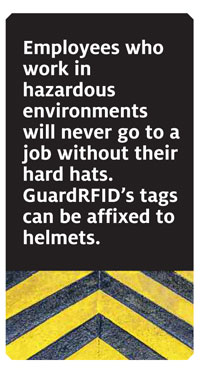
Retailers moving toward chainwide adoption of RFID for inventory management began asking for software that could support a broad spectrum of business processes without the need for costly in-store servers, says Dean Frew, SML's chief technology officer and senior VP of RFID solutions.
To address this demand, in 2013, SML began working with U.K. retailer Tesco to develop Clarity 3.X software. Tesco wanted to adopt RFID to boost customer service at its more than 500 F&F brand stores, by reducing out-of-stocks and freeing up sales associates from performing manual stock counts, so they could spend more time assisting shoppers.
Retailers today require highly scalable solutions that support hundreds of stores—simultaneously performing stock counts and replenishment processes, and tracking deliveries, Frew says. That meant a fundamental shift from Clarity's pipeline architecture to a cloud-based software suite that enables horizontal scalability to support retailers of all sizes. Clarity 3.X does not require any servers running at a retailer's site. That means a much lighter technology footprint in stores, he says, which simplifies deployment and support.
Retailers can also implement Clarity 3.X with point-of-sale readers. This enables the retailer to have item-level inventory accuracy at the last transaction point in the chain, with the customer, Frew says.
Clarity 3.X features a Web dashboard and a user interface for handheld readers or tablets. "These three user terminals support initiation of transactions, finalization of transactions, or basic or advanced business intelligence reporting," Frew says. The applications enable sales associates or managers to monitor the status of a stock count, view a variance of that stock count, direct replenishment or spot a trend in out-of-stocks on the store floor for the week, he says.
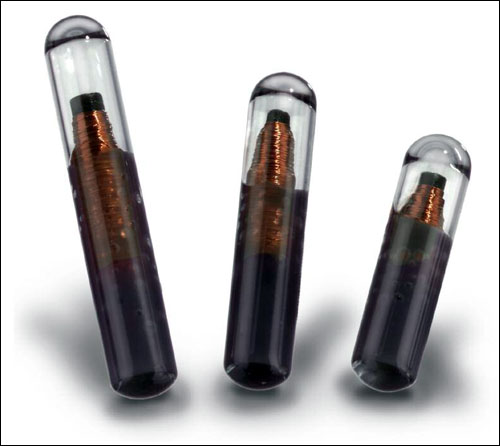
Today, Tesco is using Clarity 3.X to manage more than 95 percent of its F&F brand apparel line. SML also provides Tesco with most of the EPC Gen 2 passive ultrahigh-frequency RFID tags it's using to identify more than 200 million items annually. The retailer is using fixed and handheld readers from Zebra Technologies, and Nedap pedestal readers. "We also have built Clarity to support future technologies, such as ceiling readers and robots," Frew says (see Tesco Deploys Tag-Reading Robot at Five Stores to Track F&F Clothing).
Tesco has reduced out-of-stocks by more than 95 percent, and stock counts take one-twentieth of the time they used to take, so sales associates can spend more time servicing customers. The retailer also has real-time visibility of stock levels and the locations of specific items, Frew says, so it can provide an omnichannel shopping experience for customers, such as buy online pickup in store. Based on the benefits seen with the F&F apparel brand, Tesco is now rolling out RFID at the mobile phone shops in its superstores.
As for American Apparel, the retailer is now evaluating whether to upgrade its RFID item-level tracking software.
Water Leaks in Cars Can't Hide From RFID
Smartrac's Sensor Tadpole tag helps automobile manufacturers ensure their vehicles are watertight.
Water leaks can cause significant damage to a vehicle's electronics, cabin and trunk, during and after assembly. Automobile manufacturers rely on time-consuming manual processes to check for water leaks in vehicles before they leave the factory. But leakage, which usually comes from window seals, weather stripping and body seams, can be hard to detect, ultimately leading to consumer distress and dissatisfaction.
Now, a German manufacturer of high-end cars is piloting an RFID solution, with industrial automation specialist Turck, to ensure vehicles leaving its factory are completely watertight. The solution uses Smartrac's Sensor Tadpole, a new passive ultrahigh-frequency on-metal RFID tag with RFMicron's Magnus S2 Sensor IC, which can sense moisture or pressure. The Sensor Tadpole, which can be delivered pre-encoded, has an Electronic Product Code and a unique sensor code.
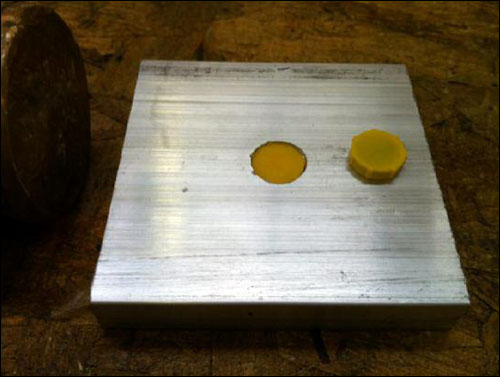
Six to 16 tags are attached via adhesives to a car's body during assembly. Standard UHF handheld readers or gate readers interrogate the tags as they pass through the automaker's quality-check areas, which include a high-pressure shower tunnel to ensure the sensors are placed and working correctly.
The sensors are read before and after a vehicle moves through the shower tunnel. The before-and-after data values are compared, using software provided by Turck that runs on the fixed or handheld readers. If there's a value difference, which would indicate a leak, the tag's EPC indentifies the specific location of the leak.
The tags can detect water under carpets, insulators and seats and from high-voltage areas, says Lauri Hyytinen, head of Smartrac's segment automotive business division. "You don't need probes or swabs anymore to identify water from different locations," he says.
Automakers can use Smartrac's Smart Cosmos cloud-based services platform to collate and analyze the data received from the sensor tags. They can, for example, track the performance of vehicle components and potentially improve the quality of those components.
"There have been several tests and proofs of concept [with the auto company] to establish an error-free solution," says Walter Hein, Turck's business-development manager. "We began our tests reading the tags via handhelds. The next step was a gate test to simulate real production conditions. The first gate test has been finished and others are just in progress." Turck is also running tests with other automakers and still more are interested in testing the product, he says.
Smartrac designed the Sensor Tadpole tag as a low-cost solution to the challenge of water-sensing applications in high-volume deployments. Water sensors using active tags are too costly for wide-scale use, Smartrac's Hyytinen says. They require batteries that must be replaced on a regular basis, which drives up the cost. "So," Turck's Hein adds, "obviously there is a huge demand for a turnkey solution like this."
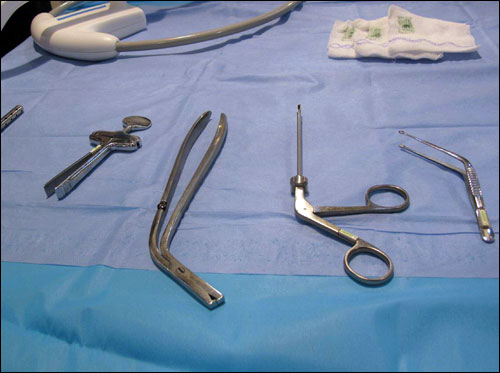
The auto company is now deciding whether to move forward with a full-scale implementation, Hein says. "We are very confident to see such solutions running this year," he says.
The customer can benefit in a number of ways, he adds, such as the elimination of errors resulting from manual operations. "With the current test methods for leakage, some of the faulty vehicles are not detected and are delivered to the customers," Hein says. With the automated system, faulty vehicles are immediately detected and removed from the line. "The 100 percent detection ensures that each vehicle is leak-proof when it leaves the production hall," he says. "Any costly rework is no longer required."
In addition, Hein says, because only checked vehicles that have been verified as leak-proof are delivered to consumers, complaints about leaks "are becoming a thing of the past. Thus, both the customer and the brand can benefit from the increased level of quality."
The Sensor Tadpole has the potential to deliver benefits to other industries, such as aviation and shipbuilding, that also must monitor products for water leakage, Smartrac says.
